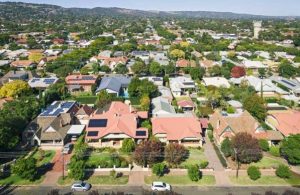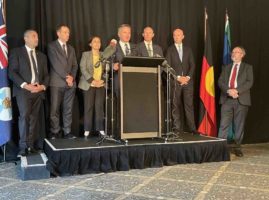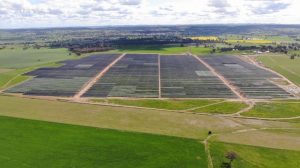Have you ever found yourself so trapped by a tricky problem that the only way to break free was to pose a bigger question, thereby revealing new solutions that lay beyond the problem by which you were trapped?
Energy ministers around Australia are currently grappling with a vexing problem as we speak: “How can the domestic energy grid and energy market design be adapted to cope with a higher percentage of variable renewable energy and the withdrawal of coal and gas generators?”
The adoption of renewable energy by communities and investors alike has smashed all expectations, as Australia and the world turn their backs on emissions-intensive energy generation.
So what’s the problem? As we understand it, governments have found it difficult to leave the current market system alone.
In part, this is driven by differences of opinion among governments as to the speed at which coal & gas generators will (or should) exit the market and replacement technologies will be commercially available.
In the absence of a coordinated national change, pressure for uncoordinated intervention from governments at all levels distorts the signals needed for private investment in energy assets and capabilities needed to maintain reliability and affordability.
The pressure to intervene stems from a fear of prolonged periods during which “the sun don’t shine and the wind don’t blow”, especially if coal and gas generators exit before replacement technologies are commercially available. The fancy term for this is “dunkelflaute”.
Responding to this challenge of policy confidence, the Energy Security Board has recommended a “capacity market” mechanism, where generators get paid not for the energy they produce, but on a “just in case” basis a long time ahead of any (potential) shortage.
Stakeholder reactions suggest that such a mechanism may jack up power prices, dilute competition, and reduce (rather than improve) reliability. The market is yet to be convinced – even if those risks were acceptable – that such a mechanism would actually solve for the dunkelflaute.
One of the drawbacks of a capacity market mechanism is that may encourage investment in generators that cannot respond quickly enough to fast moving grid conditions. And impede investment in those flexible and responsive assets that can solve the problem.
For the energy nerds and commodity traders out there, feel free to read chapter 3 of our Discussion Paper.
If ministers are trapped by the “vexing problem”, it may help to pose a bigger question: “How can a new energy system based on evolving technologies minimise costs and maximise benefits at every level of society and the economy?”
Thinking about this bigger question, we see a future with profound transformative transitions in technology, including energy storage & conversion, artificial intelligence and connected devices.
We see Australia generating clean energy in volumes many times larger than domestic demand.
Were such a future to emerge, fear of the dunkelflaute would become a relic of thinking tied to historic approaches and 20th century technology.
The ingredients for much of this transition have already been purchased by Australian families and businesses. As an example, subtle and responsive shifts in the time at which households and industrial customers use their appliances (e.g. pool pumps, air-conditioners) can dramatically expand the flexibility of the grid.
In the residential market alone, several GW of demand is available to address peak and low demand events and system security.
As an example, pool pumps could have theoretically covered one-third of the shortage caused by the recent Callide outage if the time at which they are used could be controlled.
Further potential control would be available from smarter control of other appliances and solar exports. These devices are set to become universally connected over time , and in the future could be remotely managed.
The potential for a further step-change may also come from hydrogen electrolysis and electric vehicles. In the passenger market alone, Australia is expected to have approximately four million EVs by 2040. EVs are widely distributed and mobile.
With the right policy frameworks and appliance standards, they can instantly soak up energy from the grid during oversupply, or discharge into the grid during undersupply, exactly where it is needed.
Telstra wants Australia’s energy market to be affordable, reliable and fair. We have a direct and growing interest in Australia’s energy future. Our own power bill is equivalent to that of 300,000 Australian families’ put together.
We are about to launch as an energy retailer, adding more competition to the market.
As Australia’s largest telecommunications company, we depend heavily on the reliability of energy supply. We have standby generators and battery storage that we already use to support the security of the energy system.
We also generate enough renewable energy to supply over 100,000 households and continue to invest in further renewable projects.
Reframing tough questions can shift perspectives, unlock innovation and change the conversation. Telstra has prepared a Discussion Paper, which we hope can stimulate exploration of new angles on the problem.










